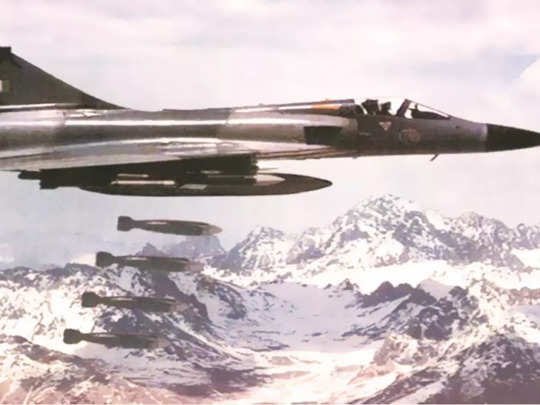Kargil Vijay Diwas 2022: Laser Bomb, Heron Drone…Israeli weapons created such devastation in Kargil that Pakistanis ran away


Everyone knows about the way the relationship between India and Israel has strengthened for the last nearly three decades. Today it becomes more necessary to talk about this friendship at a time when India is celebrating the victory over Pakistan in Kargil 23 years ago. Yes, Israel also helped India in this war.
23 years ago, there was a conflict between India and Pakistan in Kargil, which the enemy has not forgotten even today. Pakistani terrorists who cherished the dream of occupying Kashmir had infiltrated Kargil in Dras sector. It started in May 1999 and reached its end with India’s victory on 26 July 1999. Whenever there will be talk about this war, then there will be mention of that friend of India who told Pakistan its reality in Kargil. Israel, the country which has been seen standing with India in every trouble. The Indian Army and the Indian Air Force (IAF) had enough weapons to respond to Pakistan, but Israeli help helped them achieve more success on the enemy.
Historic Operation Safed Sagar
The Kargil war is that event in history in which the Indian armies had told the world not to make the mistake of taking them lightly. In May 1999, when Pakistani terrorists and soldiers crossed the border and entered India, the IAF launched ‘Operation Safed Sagar’ on 11 May to expel them. Running this mission at an altitude of 23,000 feet was not an easy task. The purpose of launching this mission was to provide support to the army. IAF had deployed fighter jets like MiG-27, MiG-21 and MiG-29 in this operation. MiG-21 and MiG-27 crashed by IAF on 27 May. After this, the IAF deployed French fighter jet Mirage 2000 in it and Western Air Command monitored the entire operation.
From Israeli drones to bombs,
Operation Safed Sagar was launched by the IAF in three phases. In the first phase, the enemy’s bases were reckoned, which included information about the weapons and bunkers they had. After this, the air force attacked the enemy’s camps sitting on high peaks, their weapons and their oil supply with food. In the third phase, laser-guided bombs received from Israel were attacked. Israel gave him great help to the IAF at the time and also provided night vision devices along with laser guided bombs and missiles to the inaccessible places. Along with this, it was also helped in finding the exact location of the enemy through Israel’s Heron drone.
Information about Israel’s aid is also found in Nicholas Blarell’s book The Evolution of India’s Israel Policy (OUP). In this he has written, ‘Pak infiltration was carried out at the forward posts in a phased manner. It was also proved from the height of the hills that the Indian Army was not ready for this nor could it stop the infiltration from the LoC side. They also lacked training and fighting in the mountains.
The Air Force crossed the LoC
On May 25, the Air Force was ordered to cross the LoC and the infiltrators were asked to respond in their own style. However, the then Vajpayee government was advised to use only helicopters. The IAF had told the government that a helicopter would not be the right option for this. Operation Safed Sagar is still considered a milestone in the history of IAF. This was the first time that the IAF had to carry out an operation at such a height. In Kargil’s environment, saving fuel was the most important thing in addition to the mission. MiGs and Mirages were the strength of the Air Force.
When was the first attack
The IAF’s first attack began at 6:30 a.m. on May 26, 1999. MiG-21, MiG-27ML and MiG-23BN fighter jets were involved in this attack. At the time of the attack, the MiG-29 did the work of air defense along with giving cover to the fighters. After the attack, Canberra also did a recce of the enemy’s damage. The MiG-29 had attacked the enemies frozen in the mountains of Kargil with R-77 missiles. Operation Safed Sagar lasted for 60 days during which 300 aircraft completed 6500 sorties. Fighter jets attacked 24 targets in 1235 sorties. The altitude of Kargil is 16,000 to 18,000 feet above sea level. In such a situation, fighter jets had to fly at an altitude of a little more than 20,000 feet. This task was difficult because the air pressure at altitude is also very low.
DISCLAIMER: The author is solely responsible for the views expressed in this article. The author carries the responsibility for citing and/or licensing of images utilized within the text.
